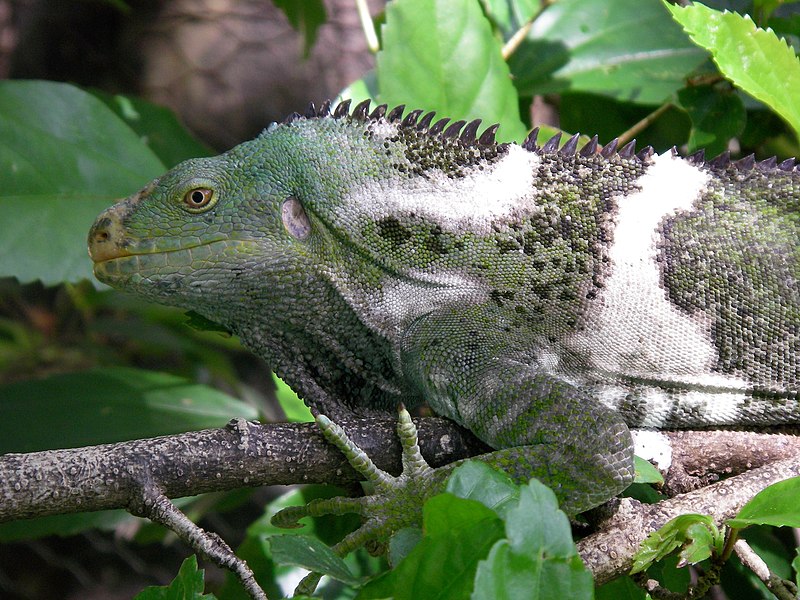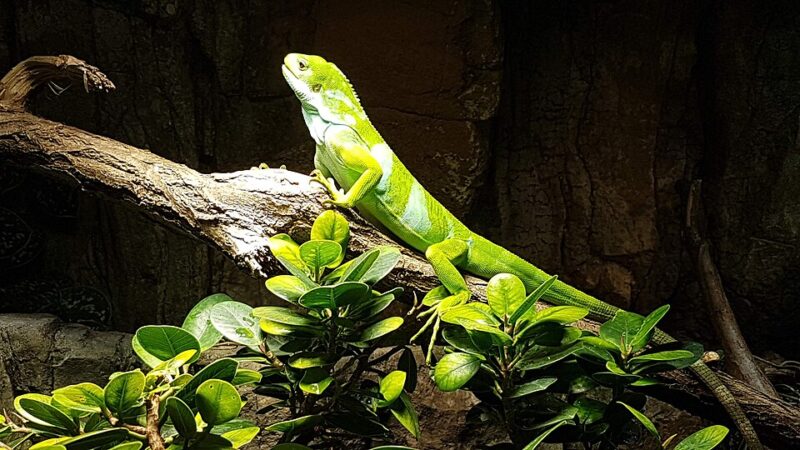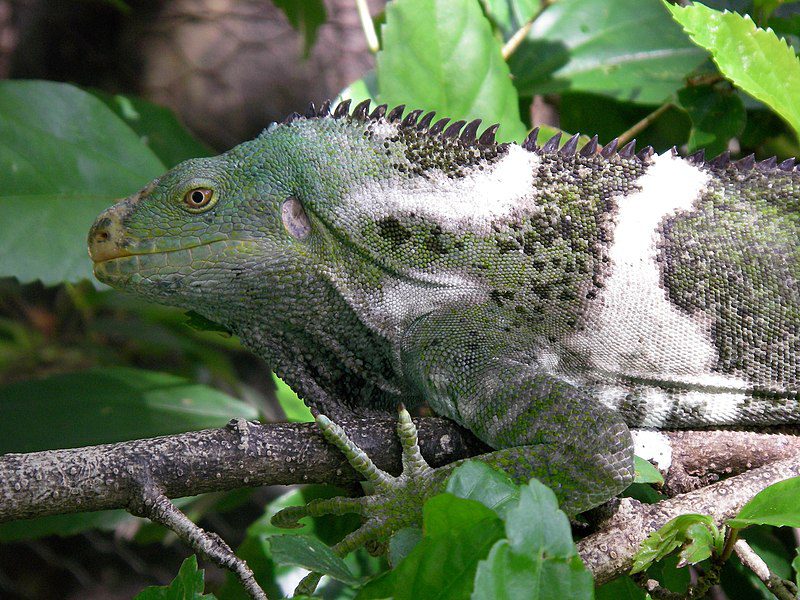How Did Iguanas End Up in the Remote Islands of Fiji?
Millions of years ago, iguanas made an incredible journey across the Pacific Ocean. They traveled over 5,000 miles from North America to the remote islands of Fiji, likely by floating on natural rafts made of vegetation. This remarkable voyage is considered the longest known transoceanic dispersal by any land-dwelling vertebrate. Discover WildlifeThe Washington Post+1Discover Magazine+1The Times+3Popular Science+3Discover Magazine+3
Scientists believe that these reptiles survived the months-long journey by enduring harsh conditions, such as limited food and water. Their ability to go without food for extended periods and to survive on the vegetation rafts themselves may have contributed to their successful migration.
What Makes These Fijian Iguanas So Unique?
Once in Fiji, the iguanas evolved into distinct species, adapting to the island’s unique environment. The Fiji banded iguana is known for its vibrant green color with blue or light green stripes, while the Fiji crested iguana features a spiky crest along its back and tail. Smithsonian National Zoo+3Smithsonian National Zoo+3The Animal Facts+3
These endemic species are not found anywhere else in the world. Their isolation has led to unique behaviors and characteristics, making them a subject of interest for scientists studying island adaptation and reptile biodiversity.

The Science Behind the Iguana Migration
Recent DNA studies have revealed that Fijian iguanas are closely related to North American desert iguanas, supporting the theory of their transoceanic journey. This genetic link suggests that the iguanas’ ancestors made the voyage approximately 34 million years ago, during a time of significant geological and climatic changes. AP News+1The Washington Post+1The Times+1Popular Science+1
The concept of “rafting” explains how these reptiles could have traveled such vast distances. Natural events like storms or floods could have uprooted trees and vegetation, creating floating rafts that carried the iguanas across the ocean. Surfer

When Did This Epic Reptilian Voyage Take Place?
The migration of iguanas to Fiji is estimated to have occurred around 34 million years ago, during the late Eocene epoch. This period was marked by significant climatic shifts and the formation of new land masses, providing opportunities for species dispersal. The Times+4Popular Science+4Discover Magazine+4
Fossil records and geological data support this timeline, indicating that the iguanas arrived in Fiji well before human habitation. Their long-standing presence on the islands has allowed them to evolve into the unique species we see today.

Could Other Animals Have Made Similar Journeys?
While the iguana’s journey is extraordinary, other species have also made remarkable migrations. For example, certain rodents and lizards have been known to raft between islands, and some birds have colonized remote areas by flying long distances.
These instances of transoceanic dispersal highlight the resilience and adaptability of various species. They also underscore the importance of understanding these movements to comprehend current biodiversity patterns.

Why Does This Discovery Matter Today?
Understanding the iguana’s migration provides insights into how species adapt to new environments and the factors that influence biodiversity. This knowledge is crucial for conservation efforts, especially as many Fijian iguanas face threats from habitat loss and invasive species. Taronga Conservation Society Australia
Studying these ancient journeys can also inform our understanding of how current climate change might impact species distribution and survival. It emphasizes the need to protect unique ecosystems and the species that inhabit them.
Are These Amazing Iguanas in Danger of Extinction?
Yes, many Fijian iguanas are currently endangered due to factors like deforestation, introduced predators, and human encroachment. Conservation programs are in place to protect these species, including habitat restoration and breeding initiatives. San Diego Zoo Wildlife Alliance
Public awareness and support are vital for the success of these efforts. By understanding the unique history and challenges of these reptiles, we can contribute to their preservation for future generations.
Final Thoughts on the Iguana’s Incredible Journey
The story of the iguanas that conquered Fiji after a 5,000-mile journey is a testament to the resilience and adaptability of life. Their epic voyage across the Pacific Ocean millions of years ago has led to the development of unique species that continue to captivate scientists and nature enthusiasts alike.
As we learn more about their past, we gain valuable insights into the processes that shape biodiversity and the importance of conserving our planet’s unique ecosystems.

FAQs About Amazing Iguanas in Fiji
How far did the iguanas travel to reach Fiji?
They likely journeyed over 5,000 miles across the Pacific Ocean, probably by natural rafts like logs or vegetation mats during prehistoric times.
Are Fijian iguanas different from American ones?
Yes, they are genetically unique and have adapted to island life with distinct behaviors and physical traits.
When did the iguanas arrive in Fiji?
Scientists believe they arrived approximately 34 million years ago, making them one of the oldest reptilian settlers in the region.
Can other reptiles make similar long-distance journeys?
Rarely, but there are a few documented cases involving tortoises and lizards rafting across oceans.
What’s being done to protect iguanas in Fiji?
There are ongoing conservation programs supported by Fijian authorities and global wildlife organizations to ensure their survival.
For more information on Fijian iguanas and their conservation, visit the San Diego Zoo Wildlife Alliance and the National Zoo
Read our previous article: Space Pirates Already Have Their Sights Set on the ‘High Seas’ of Earth Orbit. Can We Stop Them?
